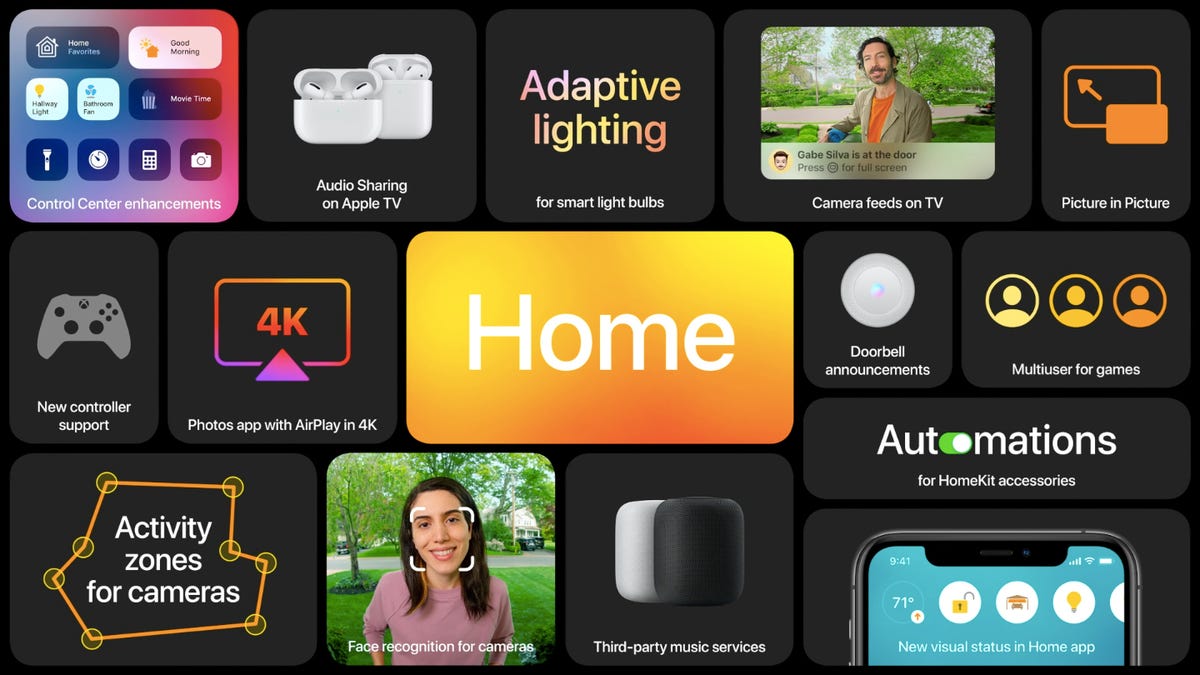Apple will tie HomeKit into your HomePod and your Apple TV with iOS 14 this fall
An update to HomeKit will suggest smart home device automations and link your video camera to other Apple devices when it comes to iOS 14 this fall.

Update, Nov. 12: Read our HomePod Mini review.
Apple announced updated features for its HomeKit smart home platform at its 2020 online World Wide Developer Conference. When the update comes to its iOS 14 mobile software this fall, Apple will recommend automation settings for HomeKit-compatible smart home devices and introduce deeper integrations between your smart home camera feed and your HomePod and your Apple TV.
HomeKit connects various Apple-supported devices around your home, including smart light bulbs, security cameras and thermostats, to an iOS control center app called Home. Within the Home app, you can manage smart home devices from different manufacturers, including linking multiple devices together into groups to control them all at once.
Apple's senior HomeKit software engineer Yah Cason led the smart home portion of the presentation during Apple's virtual conference. After highlighting the joint consortium of smart home companies, the Connected Home over IP project, into which Apple, Google, Amazon and others entered earlier this year, Carson got into the specific new features coming to the HomeKit ecosystem with iOS 14.
The first new component he highlighted was the Suggested Automations feature. When you add a new HomeKit-compatible smart home device, your iPhone will, as you might have guessed, offer a few possibilities for how to make the most of your new gadgets.
Carson also highlighted Apple's increased attention to home security cameras, which started at last year's WWDC and its announcement of HomeKit Secure Video. Where last year the focus was on-device security and facial recognition, this year we see how that might come together in a more meaningful way around your home.
If you have a HomeKit-compatible video doorbell, with iOS 14 you'll be able to broadcast that video feed directly to your Apple TV so you can see who's at your door. Apple is also linking up the camera feed and HomePod with the facial recognition feature built-into Apple Photos, enabling your HomePod to announce that a specific person is at your door if the system recognizes them based on your Photo library data.
Carson also unveiled a feature built into HomeKit that will let you assign activity zones to smart home cameras. An activity zone lets you customize the most important areas in a camera's field of view. That way you can pinpoint the exact area you want to trigger automations, such as an alarm or a light going on and off, to the camera's motion-detection features. An example would be telling the camera to only worry about who's coming down your front walk, as opposed to sending you alerts every time anyone walks down the sidewalk if it's also in your camera's field of view.
Activity zone customization is often built into specific camera software, but this is the first time we're aware of a platform owner building it in so that it applies to any compatible camera.
Competing smart home purveyors Google, Amazon (via its Ring subsidiary) and Samsung also offer similar integration between video feeds and various screens around your home, so for those connections Apple is for the most part bringing HomeKit to par with the other smart home platforms. Unlike its competitors who largely rely on cloud-based storage for transmitting facial recognition and other sensitive data, Apple's implementation relies heavily on data stored locally on your various devices. That gives it a stronger story for user control, which may appeal to more savvy, privacy-conscious consumers.

